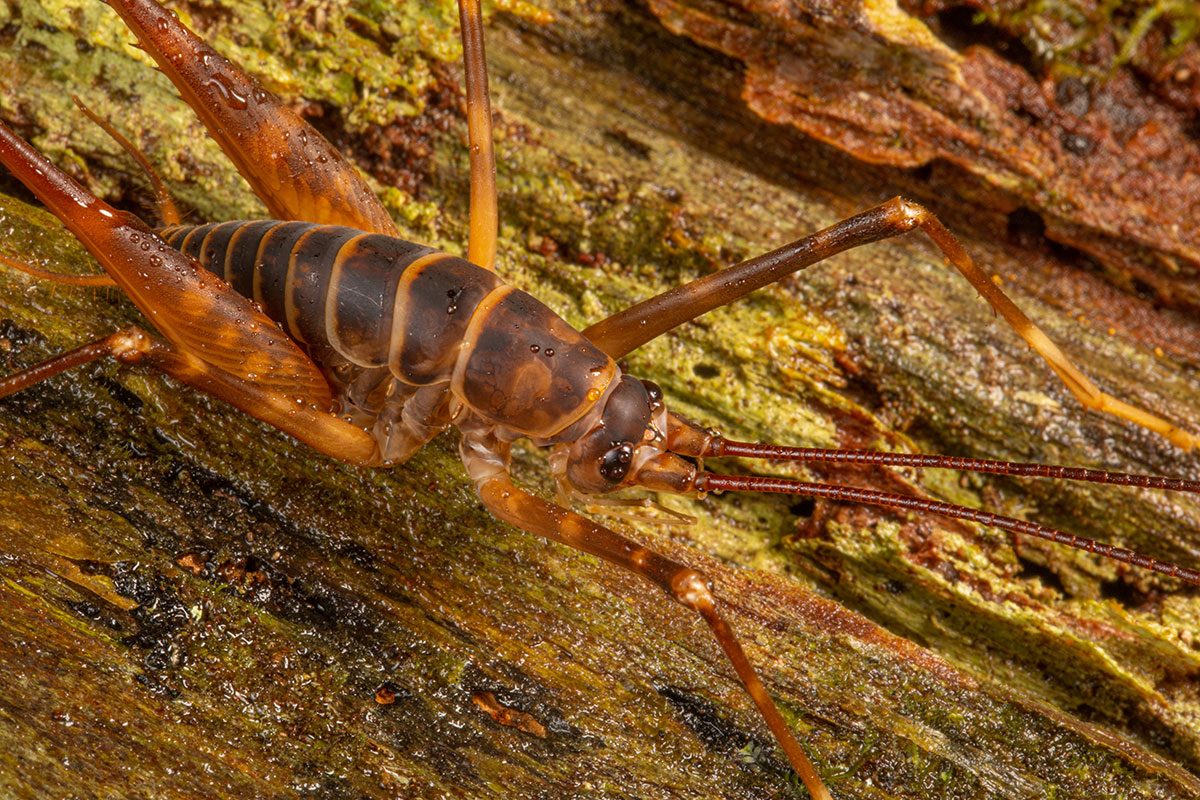I was recently lucky enough to monitor kiwi on Hauturu with the Little Barrier Island Supporters Trust. I have done this many times before at Tāwharanui with TOSSI. The exercise involves a good hike to the destination at night then sitting quietly in the dark listening to the sounds of the forest for a couple of hours. I have met some great people doing this and this trip was no exception. They patiently waited for me as I inched along the tracks on the way back to the hut, inspecting every tree for hidden treasures and some even came out with me again on their free nights. I have posted all my invertebrate observations here on iNaturalist where the community is helping me identify them all. I have also posted some fungi which were a hot topic among the volunteers.
It’s an incredible island where one can get a sense for pre-human New Zealand. Here is a list of some observations I made over the 12 days I was there.
- I saw less invertebrates, birds and geckos at elevation.
- Piwakawaka following Tieke on two occasions.
- By weight there was much more industrial plastic pollution (mussel floats) than domestic plastic pollution on the beaches.
- Similar gecko numbers in winter compared to summer. One seen every 20 minutes on night walks.
- Cave Weta were the dominant weta by a factor of 10 or more. Tree Weta, Ground weta and Wētāpunga active.
- Winter invertebrate abundance similar to mainland sites with predator control (and less birds). At night, in two out of three tress invertebrates were easily found.
- Invertebrates not much bigger than raindrops stay hidden during the rain.
- NZ Giant Centipede found 3m above ground inside a Kanuka tree that fell in the middle of the day. The species is very arboreal.
- Korimoko chasing Ruru during the day.
- Flock of 18 Kereru feeding on Muehlenbeckia.
- A high of 12 Shore Skinks seen from one observation point. No other skinks observed.
- Invertebrate diversity high with many species I had not seen before. Some had not been previously photographed in the wild.
- Strange absence of Katydid calls.
- Very empty streams with only Shortfinned Eel and Banded Kokopu observed. Huge flushing events the likely cause of low freshwater diversity and abundance.









